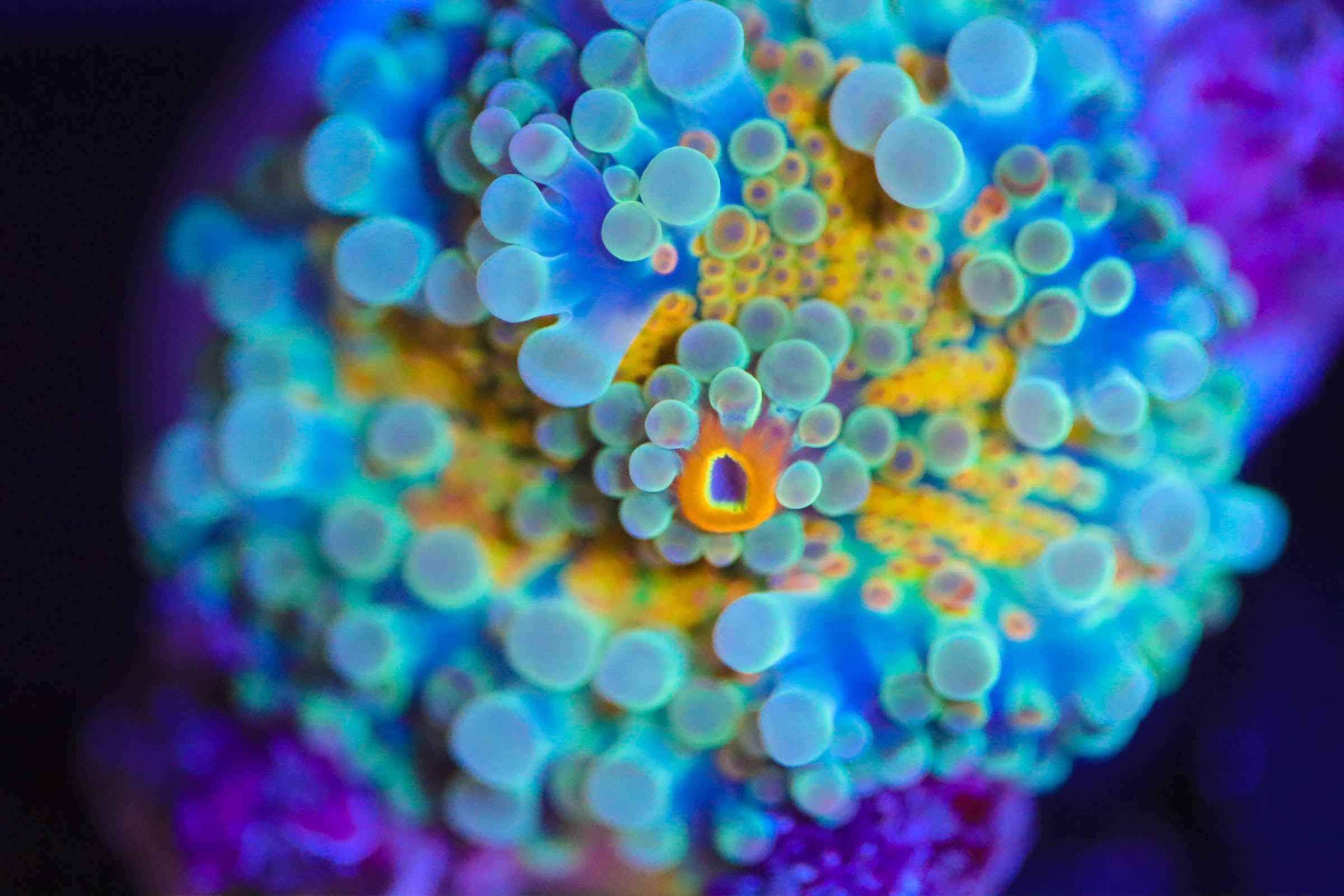
Yuma Mushroom
Placement: Low to Middle
Light: Medium
Flow: Low
Care Level: Moderate
Type: Soft Coral
Compatibility: Semi-Aggressive
Growth Rate: Fast
Photosynthetic: Yes
Special Care: Slightly less hardy than other mushroom types.
Ricordea Yuma, more commonly referred to as simply Yuma, are the Indo-Pacific cousins of the Florida Ricordea. Like all mushrooms they are also sometimes referred to as Disc Anemones, as they are not true corals and share traits with both hard and soft corals, as well as anemones. Yuma mushrooms come in a wide variety of colors, with the most common being green, orange and red. They can also be found in a wide variety of color combinations, such as the Black Widow Yuma which has orange, purple and blue tentacles and a green mouth. The tentacles of Yuma mushrooms alternate between large and small and they tend to have more vibrant coloration than Floria Ricordea mushrooms. They are, however, considered to be one of the more difficult mushrooms to keep, although they are still easier than most LPS or SPS corals.
 Yuma mushrooms are found in shallow, clear waters in the Indo-Pacific region. Like the related Florida Ricordea mushroom, they prefer higher levels of light than most other types of mushrooms. In a home aquarium, this means that they should be placed in an area where they will receive moderate amounts of light and relatively low flow. If a Yuma appears to be “reaching” towards the surface it is likely not receiving sufficient light. Flow should be strong enough to prevent the buildup of detritus, but not so powerful that the Yuma is blown around forcefully. Flow that is too strong may even cause the mushroom to detach from the rockwork.
Yuma mushrooms are found in shallow, clear waters in the Indo-Pacific region. Like the related Florida Ricordea mushroom, they prefer higher levels of light than most other types of mushrooms. In a home aquarium, this means that they should be placed in an area where they will receive moderate amounts of light and relatively low flow. If a Yuma appears to be “reaching” towards the surface it is likely not receiving sufficient light. Flow should be strong enough to prevent the buildup of detritus, but not so powerful that the Yuma is blown around forcefully. Flow that is too strong may even cause the mushroom to detach from the rockwork.
 Like the vast majority of corals and mushrooms in the saltwater hobby, Yuma mushrooms are photosynthetic and use aquarium lighting to meet their energy needs. They can, however, be spot fed if desired. Reef Roids is a good choice for this, or any other soft coral specific food. Care should be taken to not overfeed, as this can have a negative impact on water quality.
Like the vast majority of corals and mushrooms in the saltwater hobby, Yuma mushrooms are photosynthetic and use aquarium lighting to meet their energy needs. They can, however, be spot fed if desired. Reef Roids is a good choice for this, or any other soft coral specific food. Care should be taken to not overfeed, as this can have a negative impact on water quality.
Like Florida Ricordea, Yuma mushrooms reproduce by longitudinal fission. Essentially this means that the mushroom will pinch in the center and slowly divide into two polyps. Reefers who wish to propagate Yuma mushrooms will have to wait for this natural process to occur and then carefully remove the new polyp. The new mushroom frag can then be placed in a basket or low flow area of the tank with some rubble rock or a frag plug and be allowed to naturally attach, since they cannot be glued.

Yuma mushrooms are some of the most colorful mushrooms available and while they are slightly more difficult to keep than other mushroom types their unique and vivid color patterns make them a popular choice.

